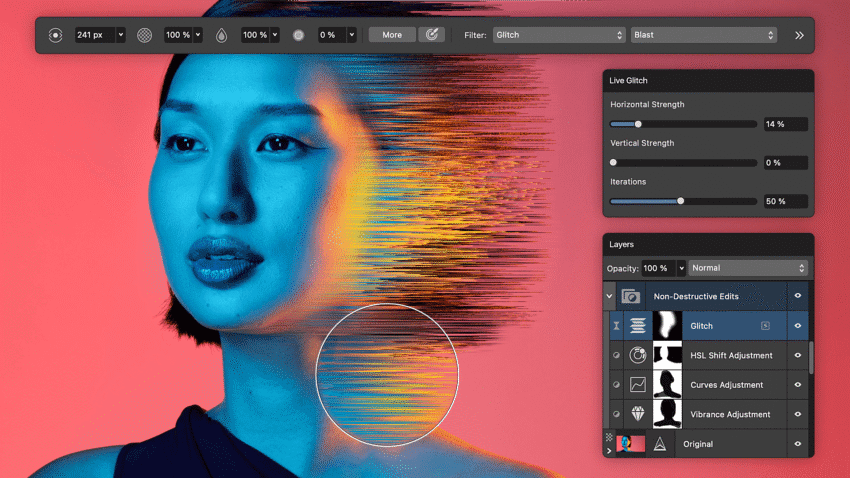
affinity s new design platform combines everything Canva has transformed its recently acquired Affinity creative suite into a comprehensive all-in-one design platform, aiming to rival Adobe’s offerings.
affinity s new design platform combines everything
Overview of the New Affinity Platform
Affinity Designer, Photo, and Publisher have been consolidated into a single application, marking a significant shift in the way users will interact with these powerful design tools. This new platform is designed to cater to a wide range of creative needs, including photo editing, vector illustration, and page layout design. The decision to merge these applications into one reflects a growing trend in the software industry, where convenience and user experience are prioritized.
Free Forever: A New Business Model
One of the most notable changes with this relaunch is the pricing model. Previously, each Affinity application required a one-time purchase of $70, which was appealing to many users who preferred to avoid subscription fees. With the new Affinity app, Canva has introduced a “free forever” model, eliminating the need for a subscription. This approach is particularly significant in a market increasingly dominated by subscription-based services, such as Adobe Creative Cloud, which has faced criticism for its pricing structure.
Canva’s decision to offer the Affinity suite for free is likely to attract a broader audience, including those who may have been hesitant to invest in the standalone applications. This move could also create a competitive edge against Adobe, which has long been the industry standard for creative software.
Platform Availability
The new Affinity app is currently available for Windows and Mac users, with plans to expand to iPad in the near future. This multi-platform approach ensures that users can access the software across various devices, enhancing flexibility and usability. The ability to work on projects from different devices is increasingly important in today’s mobile-centric world, where creatives often need to switch between workstations.
Technical Features and Integrations
Universal File Type
One of the standout features of the new Affinity platform is the introduction of a “universal file type.” This innovation simplifies the workflow for users, allowing them to work seamlessly across different design tasks without the hassle of converting files between formats. This feature is particularly beneficial for collaborative projects, where multiple users may be working on different aspects of a design.
Integration with Canva
The new Affinity app also boasts integrations that facilitate quick exports to users’ Canva accounts. This feature is particularly advantageous for those who already use Canva for their design needs, as it streamlines the process of moving between the two platforms. Users can now leverage the strengths of both applications, enhancing their creative capabilities.
AI-Powered Tools for Premium Subscribers
Canva Premium subscribers will gain access to AI-powered editing tools directly within the Affinity app. Features such as image generation, photo cleanup, and instant copy will be available, allowing users to enhance their designs with advanced technology. While these tools can significantly improve efficiency and creativity, they may also raise concerns among some creatives who are wary of AI’s role in the design process. The integration of AI in creative workflows is a topic of ongoing debate, with opinions divided on its impact on artistic integrity.
Legacy Support and User Concerns
Support for Existing Users
For users who have previously purchased the standalone versions of Affinity Designer, Photo, and Publisher, the older applications will continue to function as usual. Canva has assured these users that they will not be forcibly transitioned to the new platform. However, it is worth noting that the V2 editions of the standalone apps were removed from the Affinity website several weeks prior to this announcement. This raises questions about the future of support and updates for existing users, as Canva has not clarified whether they will continue to receive maintenance and updates for their purchased software.
Concerns Over Subscription Models
Affinity’s previous one-time purchase model was one of its most attractive features, especially when compared to Adobe’s subscription-based approach. Many users were apprehensive that Canva, following its acquisition of Affinity, would adopt a similar subscription model. However, Canva has made a concerted effort to emphasize the “free” aspect of the new Affinity app, aiming to alleviate these concerns. The commitment to maintaining a free model is a strategic move to retain existing users and attract new ones, particularly those who may have been deterred by subscription fees.
Industry Reactions and Implications
Creative Community Response
The creative community’s response to the relaunch of the Affinity suite has been mixed. While many users are excited about the prospect of a free, all-in-one design tool, there are also apprehensions regarding the integration of AI features. Some creatives express concerns that reliance on AI could undermine the artistic process, leading to homogenized designs and a loss of personal touch. This sentiment reflects a broader debate within the design industry about the role of technology in creative work.
Impact on Competitors
Canva’s move to consolidate the Affinity suite into a free app could have significant implications for its competitors, particularly Adobe. As more users gravitate toward free or lower-cost alternatives, Adobe may need to reconsider its pricing strategy and explore ways to enhance its value proposition. The introduction of AI tools in the Affinity app may also prompt Adobe to accelerate its own AI initiatives, as the competition for user attention intensifies.
Conclusion
The relaunch of the Affinity creative suite as an all-in-one app represents a significant shift in the landscape of design software. By offering a free, comprehensive platform that integrates various design functions, Canva is positioning itself as a formidable competitor to Adobe. The emphasis on a universal file type and seamless integrations with Canva’s existing tools enhances the user experience, while the introduction of AI-powered features adds a modern touch to the creative process.
As the creative community navigates this new landscape, the implications of these changes will continue to unfold. The balance between leveraging technology and maintaining artistic integrity will be a crucial discussion point for designers moving forward. Ultimately, the success of the new Affinity app will depend on its ability to meet the diverse needs of its users while fostering a creative environment that values both innovation and artistry.
Source: Original report
Was this helpful?
Last Modified: October 30, 2025 at 10:39 pm
4 views















